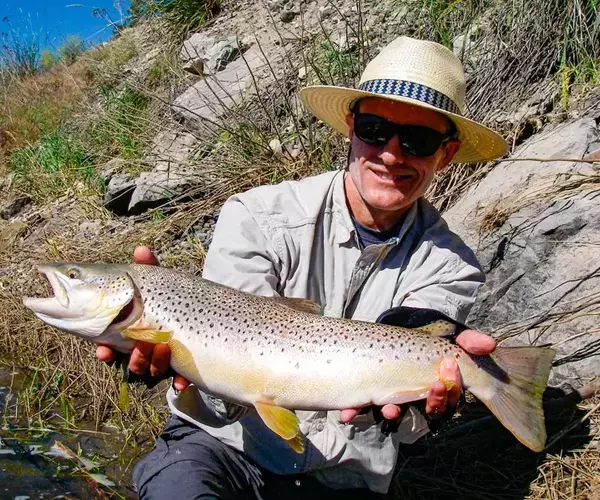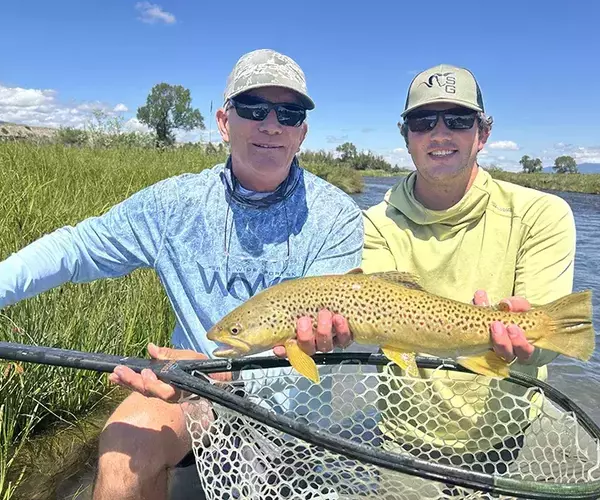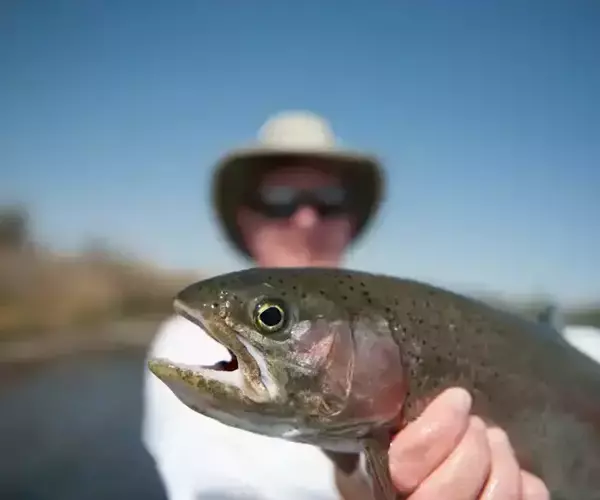5 Tips for Planning The Best DIY Fly Fishing Trip to Bozeman, MT
Posted by: Alex
Date: 10/03/2025
Planning a DIY fly fishing trip to Bozeman doesn’t have to be complicated. With so many rivers nearby, a little preparation goes a long way in making the most of your time on the water. From timing your visit to packing smart and knowing the conditions, these tips will help set you up for a productive trip.
5 Tips for Planning a DIY Fly Fishing Trip to Bozeman
Bozeman has earned its reputation as one of the best fly fishing towns in Montana. With the Gallatin River, upper and lower Madison River, Jefferson River, and Yellowstone River all close to town, anglers don’t have to travel far to find blue-ribbon trout fishing. Planning a fly fishing trip here isn’t complicated, but knowing when to come, what to bring, and how to make the most of your days on the river will set you up for success. Here are five tips to keep in mind when you’re planning your trip.
Pick the Right Time of Year
When you’re planning a DIY fly fishing trip to Bozeman, MT, timing matters. Water levels, hatches, and even angling pressure can change a lot from one month to the next, and no two years are exactly the same. Understanding how conditions shift through the year will help you set realistic expectations and make the most of your days on the water.
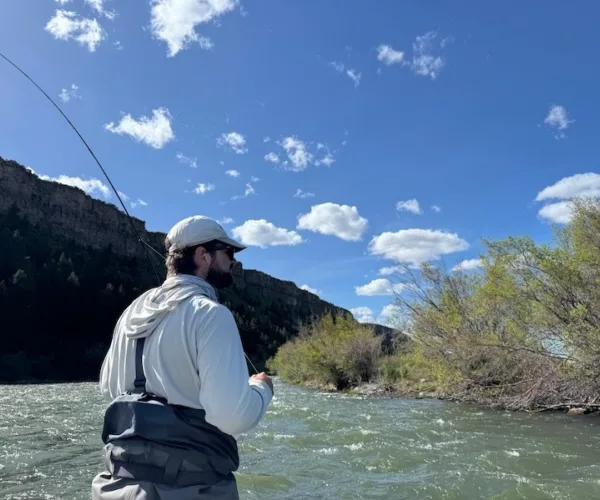
Spring
Spring in Bozeman can be a mixed bag, but it has its rewards. March and April often bring hungry post-winter trout looking for the first big meals of the year. Midges, baetis, and nymph rigs keep rods bent, and a warm stretch can even bring some early dry fly fishing. By late May, runoff from snowmelt pushes flows high and off-color, which can make fishing tough but also creates opportunity in smaller streams and tailwaters nearby.
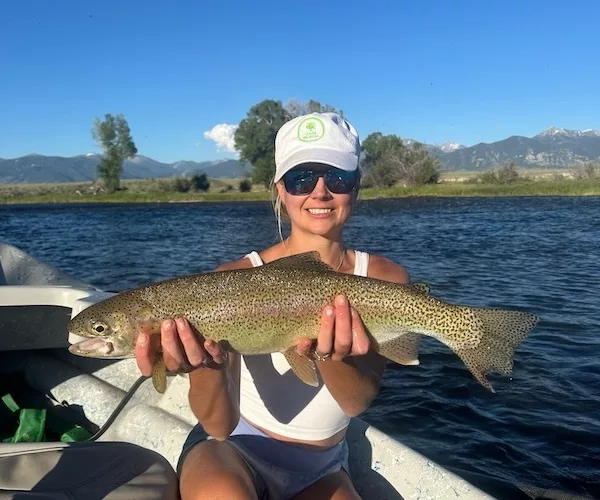
Summer
Summer in Bozeman is the season most anglers picture when they think of Montana fly fishing. From June through August, nearly every river around Bozeman is in shape, and hatches of caddis, PMDs, and hoppers make dry fly fishing reliable. Access is easy, weather is more predictable, and long days on the water are the norm. It’s also the busiest season, so planning around early mornings or less obvious stretches helps avoid the crowds.
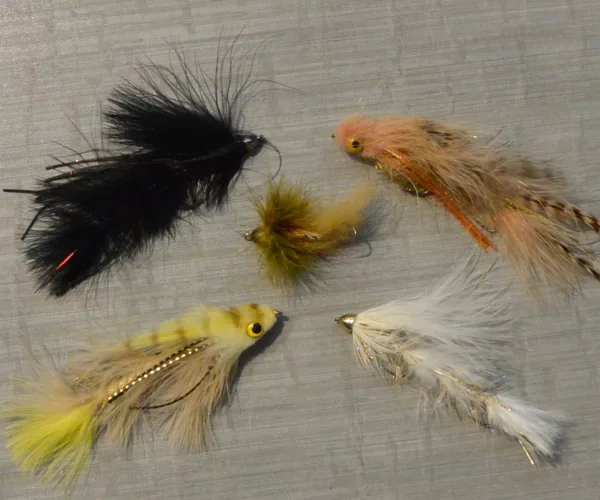
Fall
Fall in Bozeman might be the best all-around season to fish Bozeman. Cooler nights drop water temps, trout feed aggressively ahead of winter, and brown trout turn territorial as they move into pre-spawn. Baetis hatches on overcast days can bring pods of rising fish, and streamer fishing is at its best. The crowds thin out after Labor Day, leaving more water open, and the mix of color on the banks with active fish in the rivers makes it a favorite time for locals.

Winter
Winter in Bozeman slows things down but doesn’t shut fishing off. Rivers like the Gallatin and East Gallatin stay open enough to fish through the coldest months, with trout stacked in slower seams and buckets. Midges hatch almost daily, and on warmer afternoons trout will rise in softer water. Attractor nymphs, eggs, and worms make up most of the diet, and patience is key, it often takes multiple good drifts before a fish eats.
Bring the Right Gear
For a DIY trip, you are going to want to prepare an extensive packing list. Whether going on a guided trip during your time or fishing entirely solo, having the right gear makes all the difference when fly fishing in Montana. Waders and boots open up far more water, especially on rivers like the Gallatin, where wading is the way to fish. A small sling or hip pack keeps your essentials, flies, tippet, indicators, split shot, organized without weighing you down. Traveling light but prepared is the best balance. With the basics covered, you can step into almost any stretch of water around Bozeman and fish it confidently.
Learn the Rivers Before You Go
One of the best parts about fly fishing Bozeman is the sheer variety of water. The Gallatin River is the closest and most approachable, with miles of wade fishing right along the highway and plenty of character in both its canyon and valley stretches. The Madison River is bigger and more powerful, a favorite for floats but still offering good wading access if you know where to look. The Jefferson River is less consistent but rewards anglers with solitude and healthy trout when conditions line up. The East Gallatin River is smaller water, tucked close to town, and a good choice if you’re short on time. And the Yellowstone River, about an hour away, gives anglers one of the most famous freestones in the country.
Each of these rivers has its own quirks, and taking a little time to learn them will pay off. Read up on current hatches, flows, and access points before you go, and don’t be afraid to explore. Montana’s stream access laws give DIY anglers plenty of options, so with a bit of homework, you can find water that suits your style.
Pay Attention to Flows and Weather
Conditions around Bozeman change quickly. Runoff from late spring snowmelt can make rivers high and muddy, while a hot summer afternoon thunderstorm can blow out a small tributary in minutes. By late summer, water levels drop and fish can be spooky, while fall brings cooler nights and more stable flows. Winter means low, clear water with trout stacked in the slow edges.
Checking river flows and weather before you fish will help you make better decisions about where to go and what to bring. Even the best stretches can feel empty if you show up when water is high, dirty, or just too cold. A quick check online or a call to a local shop will give you a clear picture of what’s happening that week and help set your expectations for the day.
Bozeman Fly Fishing Guide Pro Tip
A pro tip from our Bozeman fly fishing guides: don’t try to check every river off your list in one trip. Pick one or two and fish them thoroughly. The more time you spend on a stretch, the more you’ll see how it fishes, and that understanding is worth more than a quick stop on a crowded pullout.
Don’t Overlook Hiring a Guide
Even if you’ve come to Bozeman for a DIY trip, hiring a Bozeman Fly Fishing Guides and experiencing a guided fly fishing trip can change the way you fish the rest of your stay. A good guide will do more than put you on fish; they’ll show you how to approach each river, what flies work in different conditions, and where trout are likely to hold. The knowledge you pick up in a single day will carry through to every other day you fish on your own.
Guided trips aren’t just for beginners. Even experienced anglers benefit from the perspective of someone who really knows the water they are fishing. Whether it’s a new technique, a stretch of river you’ve never seen, or simply learning how locals read the water, the time spent with a guide can shorten the learning curve and make your DIY fishing that much more productive.
Explore Bozeman Fly Fishing
Planning a DIY fly fishing trip to Bozeman doesn’t have to be complicated. Pick the time of year that matches the kind of fishing you’re looking for, bring gear that keeps you comfortable and prepared, and take the time to learn the rivers before you go. Pay attention to flows and weather, and don’t be afraid to mix in a guided trip to pick up local knowledge.
Related Articles From the Montana Fly Fishing Blog

Category: Bozeman Fly Fishing Trip Planning, News & Updates
How to Plan the Best Fly Fishing Trips to Montana
Post Date: 05/01/2024
Montana offers so many options that planning the best fly-fishing trip can be daunting. Anglers can fly fish year-round in Montana; however, understand that the best time of year for...
Read Article
Category: Bozeman Fly Fishing Trip Planning, Tips on Flyfishing Montana Rivers
A Guide to Montana Fly Fishing Trips for Beginners
Post Date: 04/18/2024
Montana fly fishing trips are great for anglers of all skill levels. The vast amount and variety of trout fishing water we have here in Montana makes it particularly great...
Read Article
Category: Gear Reviews
Essential Skwala Fishing Gear for Cold Weather
Post Date: 11/07/2024
The change in seasons has anglers fishing near Bozeman, Montana swapping out the old reliable summer essentials for the comfort and warmth of guide-tested baselayers and outerwear from Skwala Fishing....
Read Article
